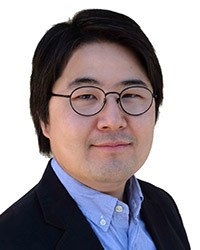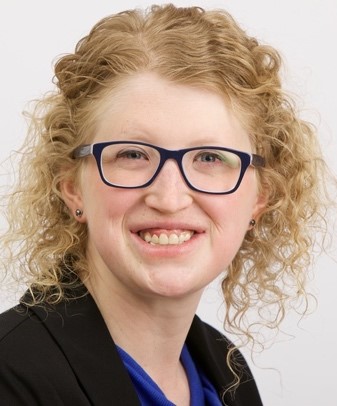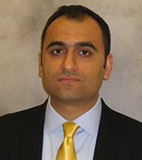Camp Fire Response
Camp Fire Survey Results
In November 2018, residents of Butte County, California experienced the most destructive and deadliest wildfire in California’s history. More than 150,000 acres were burned, and this wildfire is called the “Camp Fire.” Extensive drinking water system damage and chemical contamination were uncovered in the burn area for multiple systems. The fire rendered large and small water systems and private wells broken and chemically tainted. Water system components were physically and chemically damaged above and below ground. Water loss caused depressurization and some materials likely reentered the piping networks. The large drinking water systems affected are called the Paradise Irrigation District (PID), and Del Oro Water Company systems named Paradise Pines, Lime Saddle Marina, and Magalia. A variety of other public water systems were also impacted as well.
As residents rebuild, drinking water contamination is proving to be a very significant problem. In January 2019, a team of engineering and science professors from Purdue University and Manhattan College were called in to provide technical assistance. From February 11-13, they inspected damaged areas and visited with water utilities, local, state, and federal officials. While there, the team proposed a prioritization of response actions to expedite damage assessment and community recovery to the PID, town, county, state, and federal officials.
One of their major findings was that people living in the burn area lacked much needed building water safety guidance. While many efforts were underway to understand and resolve water distribution system issues, people did not have guidance on how to determine if their plumbing was safe or requires replacement. People also did not have guidance on what they should consider when selecting in-building water treatment devices. This gap was identified to local, state, and federal agencies and a recommendation was made to immediately provide drinking water safety guidance to these individuals. A copy of the draft findings presented to utilities, town, county, state, and federal agencies can be found here (Agenda pages 20-25).
Thank you for visiting. Please contact the team at awhelton@purdue.edu if you have any questions, insights, or information you think they should know. We have also posted frequently asked questions (FAQ) received from persons affected by the Camp Fire. Presentations we have delivered about the Camp Fire response and recovery are posted here.
Sincerely,
Dr. Andrew Whelton, Dr. Caitlin Proctor, Dr. Amisha Shah, Dr. Juneseok Lee, Dr. David Yu
Public Community Meeting in Paradise, California - March 26, 2019
Video of the meeting is available at http://facebook.com/CaliforniaOES/videos/277200146550998/
Much of our project activities were developed through personal interactions with Butte County residents, the health department, local utilities, government, state government and federal agencies. For perspective you could consider watching this March 26, 2019 public meeting about drinking water hosted by the Paradise Irrigation District (PID). Representatives from the PID, Town of Paradise, and our team answered questions with the public.
The meeting was organized by the CalOES (California Governor’s Office of Emergency Services). Left to Right: PID Manager Kevin Phillips, PID Water Distribution System Supervisor Jim Ladrini, Purdue University Professor Dr. Andrew Whelton, Town of Paradise Manager Lauren Gill, PID Director of the Advisory Board Marc Sulik. The first 30 minutes was an update about system damage and actions to date. The next two-and-a-half hours was a Question and Answer Session.
Camp Fire Support Team - Professional Biographies
 The Purdue University science and engineering team is led by Andrew Whelton, Ph.D. an environmental engineering faculty member, who is nationally recognized for water infrastructure contamination and recovery. Dr. Whelton has 16 years’ of experience, and is an associate professor of civil, environmental, and ecological engineering at Purdue University. In 2014, he was called in by West Virginia Governor Earl Ray Tomblin after the 2014 Charleston chemical spill. The incident contaminated the capitol city’s sole 50 MGD treatment plant, 2200 miles of water mains, 107 storage tanks, and 120 booster stations across 124 pressure zones. About 15% of the state’s population was issued a do not use order. Through two research teams he assisted the state and community recover from the incident. His research teams have identified best practices for planning for and recovering from natural and made-made disasters that affect drinking water systems. He has extensive experience understanding material aging and chemical fate in water distribution systems and building plumbing, with an emphasis in plastic materials. He has organized and presented town hall public meetings, conducted sampling at private residences, government buildings, and provided Governor’s staff feedback on evidence-based public messaging, and engaged in press conferences. At present, he’s leading a nationally funded drinking water plumbing safety initiative with multiple universities and industrial collaborators. He previously worked for the U.S. Army, National Institute for Standards and Technology (NIST), and private firms. He earned a B.S. in Civil Engineering, M.S. in Environmental Engineering, and Ph.D. in Civil Engineering from Virginia Tech. The Purdue University science and engineering team is led by Andrew Whelton, Ph.D. an environmental engineering faculty member, who is nationally recognized for water infrastructure contamination and recovery. Dr. Whelton has 16 years’ of experience, and is an associate professor of civil, environmental, and ecological engineering at Purdue University. In 2014, he was called in by West Virginia Governor Earl Ray Tomblin after the 2014 Charleston chemical spill. The incident contaminated the capitol city’s sole 50 MGD treatment plant, 2200 miles of water mains, 107 storage tanks, and 120 booster stations across 124 pressure zones. About 15% of the state’s population was issued a do not use order. Through two research teams he assisted the state and community recover from the incident. His research teams have identified best practices for planning for and recovering from natural and made-made disasters that affect drinking water systems. He has extensive experience understanding material aging and chemical fate in water distribution systems and building plumbing, with an emphasis in plastic materials. He has organized and presented town hall public meetings, conducted sampling at private residences, government buildings, and provided Governor’s staff feedback on evidence-based public messaging, and engaged in press conferences. At present, he’s leading a nationally funded drinking water plumbing safety initiative with multiple universities and industrial collaborators. He previously worked for the U.S. Army, National Institute for Standards and Technology (NIST), and private firms. He earned a B.S. in Civil Engineering, M.S. in Environmental Engineering, and Ph.D. in Civil Engineering from Virginia Tech. |
 Amisha Shah, Ph.D. is a chemical and environmental engineer with 11 years of experience in environmental chemistry, analytical instrumentation and analysis, physiochemical process design and optimization. Her work primarily focuses on evaluating the reaction kinetics and pathways of various organic contaminants during water disinfection. Due to this work, she has extensive analytical expertise in measuring a wide-array of volatile and non-volatile organic compounds via HPLC, LC/MS/MS, GC/MS/MS, GC-ECD, IC, and IC/MS/MS. These compounds have included trihalomethanes (THMs), haloacetic acids (HAA), polycyclic aromatic hydrocarbons (PAHs), aromatic nitrogen compounds, low molecular weight organic sulfur compounds (COS, CS2, and DMS), sulfur-based amino acids, and perfluoroalkyl substances (PFASs). In her recent efforts, she has placed an important focus towards evaluating how chemical interactions in aqueous systems can be strongly influenced by their surrounding water matrix. Other research efforts have found that different water quality parameters can significantly influence disinfection by-product formation from cross-linked polyethylene (PEX) pipes that are routinely used in premise plumbing. Dr. Shah earned a B.S. in Chemical Engineering from Washington University at St. Louis and Ph.D. in Environmental Engineering from Georgia Technical Institute of Technology. She has previously worked for EAWAG, the Swiss Federal Institute of Aquatic Science and Technology in Switzerland and Yale University in New Haven, Connecticut. Amisha Shah, Ph.D. is a chemical and environmental engineer with 11 years of experience in environmental chemistry, analytical instrumentation and analysis, physiochemical process design and optimization. Her work primarily focuses on evaluating the reaction kinetics and pathways of various organic contaminants during water disinfection. Due to this work, she has extensive analytical expertise in measuring a wide-array of volatile and non-volatile organic compounds via HPLC, LC/MS/MS, GC/MS/MS, GC-ECD, IC, and IC/MS/MS. These compounds have included trihalomethanes (THMs), haloacetic acids (HAA), polycyclic aromatic hydrocarbons (PAHs), aromatic nitrogen compounds, low molecular weight organic sulfur compounds (COS, CS2, and DMS), sulfur-based amino acids, and perfluoroalkyl substances (PFASs). In her recent efforts, she has placed an important focus towards evaluating how chemical interactions in aqueous systems can be strongly influenced by their surrounding water matrix. Other research efforts have found that different water quality parameters can significantly influence disinfection by-product formation from cross-linked polyethylene (PEX) pipes that are routinely used in premise plumbing. Dr. Shah earned a B.S. in Chemical Engineering from Washington University at St. Louis and Ph.D. in Environmental Engineering from Georgia Technical Institute of Technology. She has previously worked for EAWAG, the Swiss Federal Institute of Aquatic Science and Technology in Switzerland and Yale University in New Haven, Connecticut. |
 David Yu, Ph.D. is an assistant professor of civil engineering at Purdue University in both the Lyles School of Civil Engineering and Department of Political Science. He has several years of research experience related to understanding and enhancing community resilience in the face of natural and man-made disasters. His primary interests are understanding how a variety of social and infrastructure-related factors influence displaced people’s decision to return to (or permanently relocate from) their disaster-affected home areas and how this may, in return, affect the state of physical infrastructure networks and community collective action. David uses a multi-method approach that combines qualitative research methods and computational modeling to investigate the couple dynamics of human and infrastructure components. He earned a B.S. in Engineering Science at the Simon Fraser University, Masters in Public Policy at the Lee Kuan Yew School of Public Policy, National University of Singapore, and Ph.D. in Sustainability at the School of Sustainability, Arizona State University. David Yu, Ph.D. is an assistant professor of civil engineering at Purdue University in both the Lyles School of Civil Engineering and Department of Political Science. He has several years of research experience related to understanding and enhancing community resilience in the face of natural and man-made disasters. His primary interests are understanding how a variety of social and infrastructure-related factors influence displaced people’s decision to return to (or permanently relocate from) their disaster-affected home areas and how this may, in return, affect the state of physical infrastructure networks and community collective action. David uses a multi-method approach that combines qualitative research methods and computational modeling to investigate the couple dynamics of human and infrastructure components. He earned a B.S. in Engineering Science at the Simon Fraser University, Masters in Public Policy at the Lee Kuan Yew School of Public Policy, National University of Singapore, and Ph.D. in Sustainability at the School of Sustainability, Arizona State University. |
 Caitlin Proctor, Ph.D. is Lillian Gilbreth Postdoctoral Fellow, associated with the schools of Civil, Materials, Environmental and Ecological, and Biomedical Engineering at Purdue University. She has several years of experience researching the microbial ecology and biological stability of drinking water. Her projects have investigated the interactions between water chemistry factors and opportunistic pathogen (e.g., Legionella pneumophila) growth, the impact of pipe material choice on biofilm formation, and the relationship between stagnation and biological safety of water. In 2018, she managed a 600+ sample multi-site field sampling campaign in response to Legionella contamination and directed emergency corrective actions. She has experience with a wide array of biological methods, including flow cytometry, culturing, and various molecular biology methods. She earned her B.S. and M.S. in Civil Engineering at Virginia Tech. She completed her Ph.D. research at EAWAG, the Swiss Federal Institute of Aquatic Science and Technology in Switzerland, with a degree in systems science awarded by ETH Zurich. Caitlin Proctor, Ph.D. is Lillian Gilbreth Postdoctoral Fellow, associated with the schools of Civil, Materials, Environmental and Ecological, and Biomedical Engineering at Purdue University. She has several years of experience researching the microbial ecology and biological stability of drinking water. Her projects have investigated the interactions between water chemistry factors and opportunistic pathogen (e.g., Legionella pneumophila) growth, the impact of pipe material choice on biofilm formation, and the relationship between stagnation and biological safety of water. In 2018, she managed a 600+ sample multi-site field sampling campaign in response to Legionella contamination and directed emergency corrective actions. She has experience with a wide array of biological methods, including flow cytometry, culturing, and various molecular biology methods. She earned her B.S. and M.S. in Civil Engineering at Virginia Tech. She completed her Ph.D. research at EAWAG, the Swiss Federal Institute of Aquatic Science and Technology in Switzerland, with a degree in systems science awarded by ETH Zurich. |
 Juneseok Lee, Ph.D., P.E. is an associate professor of civil & environmental engineering at Manhattan College, Riverdale, NY. He has over 15 years of experiences in drinking water distribution systems’ hydraulic analysis/ modeling/ asset management. His work has been supported by major grants from funding bodies such as the National Science Foundation, the US Environmental Protection Agency, and the California Water Service Company. His recent 5-year projects have investigated water mains failures/ developed the asset management program for a water utility that provides service to approximately 1.7 million people located in 83 communities across California. The key infrastructure components supporting this service chain include about 9,200 kilometers of water main, 134,400 line and control valves, 970 booster stations, 650 wells, 7 surface water treatment plants, 420 water storage facilities, and 450 supervisory control and data acquisition (SCADA) transmitting units. He’s a registered Professional Engineer of Civil Engineering in the state of California and currently serves as an Associate Editor of the ASCE Journal of Water Resources Planning and Management. Dr. Lee earned B.S. in Civil & Environmental Engineering from Korea University, Seoul, South Korea, and M.S. and Ph.D. in Civil & Environmental Engineering from Virginia Tech. Juneseok Lee, Ph.D., P.E. is an associate professor of civil & environmental engineering at Manhattan College, Riverdale, NY. He has over 15 years of experiences in drinking water distribution systems’ hydraulic analysis/ modeling/ asset management. His work has been supported by major grants from funding bodies such as the National Science Foundation, the US Environmental Protection Agency, and the California Water Service Company. His recent 5-year projects have investigated water mains failures/ developed the asset management program for a water utility that provides service to approximately 1.7 million people located in 83 communities across California. The key infrastructure components supporting this service chain include about 9,200 kilometers of water main, 134,400 line and control valves, 970 booster stations, 650 wells, 7 surface water treatment plants, 420 water storage facilities, and 450 supervisory control and data acquisition (SCADA) transmitting units. He’s a registered Professional Engineer of Civil Engineering in the state of California and currently serves as an Associate Editor of the ASCE Journal of Water Resources Planning and Management. Dr. Lee earned B.S. in Civil & Environmental Engineering from Korea University, Seoul, South Korea, and M.S. and Ph.D. in Civil & Environmental Engineering from Virginia Tech. |
 Arman Sabbaghi, Ph.D. is an assistant professor in the area of applied statistics at Purdue University. His research interests include statistical modeling for improved control of complex engineering systems, Bayesian data analysis, experimental design, causal inference, survey sampling, and statistical analysis with missing data. Specific major objectives of his current research include the development of efficient and powerful Bayesian and machine learning algorithms for comprehensive control in cyber-physical additive manufacturing systems, the design of multi-armed bandit algorithms, propensity score methodology for Big Data, and causal inference in the presence of principal strata. He received his Masters and PhD in Statistics from Harvard University. Arman Sabbaghi, Ph.D. is an assistant professor in the area of applied statistics at Purdue University. His research interests include statistical modeling for improved control of complex engineering systems, Bayesian data analysis, experimental design, causal inference, survey sampling, and statistical analysis with missing data. Specific major objectives of his current research include the development of efficient and powerful Bayesian and machine learning algorithms for comprehensive control in cyber-physical additive manufacturing systems, the design of multi-armed bandit algorithms, propensity score methodology for Big Data, and causal inference in the presence of principal strata. He received his Masters and PhD in Statistics from Harvard University. |
Studies Team Members Have Conducted that are Directly Relevant
We have provided links, but if there is a report you would like to read and cannot access, please contact us at awhelton@purdue.edu and we can get you a copy.
Plumbing Chemical Contamination, Decontamination, and Exposure Studies
Case study: the crude MCHM chemical spill investigation and recovery in West Virginia USA. 2017. Environmental Science: Water Research & Technology. DOI: http://doi.org/10.1039/C5EW00294J.
Investigation of the factors that influence lead accumulation onto polyethylene: Implication for potable water plumbing pipes. Journal of Hazardous Materials. DOI: https://doi.org/10.1016/j.jhazmat.2017.12.066.
Crude oil contamination of plastic and copper drinking water pipes. 2017. Journal of Hazardous Materials. DOI: https://doi.org/10.1016/j.jhazmat.2017.06.015.
Predicting Contaminated Water Removal from Residential Water Heaters under Various Flushing Scenarios. 2017. Journal of the American Water Works Association. DOI: https://doi.org/10.5942/jawwa.2017.109.0085.
Tap Water And Indoor Air Contamination Due To An Unintentional Chemical Spill In Source Water. 2016. Interaction between Theory and Practice in Civil Engineering and Construction. https://www.isec-society.org/ISEC_PRESS/EURO_MED_SEC_01/pdf/AW-11_v2_297.pdf
Residential Tap Water Contamination Following the Freedom Industries Chemical Spill: Perceptions, Water Quality, and Health Impacts. 2014. Environmental Science & Technology. DOI: http://doi.org/10.1021/es5040969.
Case study: the crude MCHM chemical spill investigation and recovery in West Virginia USA. 2017. Royal Society of Chemistry Environmental Science: Water Research and Technology. DOI: http://doi.org/10.1039/C5EW00294J.
Metal Accumulation in Representative Plastic Drinking Water Plumbing Systems. 2017. Journal of the American Water Works Association. DOI: https://doi.org/10.5942/jawwa.2017.109.0117.
In-situ cleaning of heavy metal contaminated plastic water pipes using a biomass derived ligand. 2017. Journal of Environmental Chemical Engineering. DOI: http://doi.org/10.1016/j.jece.2017.07.003.
Other Related Plumbing Studies Team Members Have Conducted
Ugly ducklings – The dark side of plastic materials in contact with potable water. 2018. npj Biofilms Microbiomes. DOI: http://doi.org/10.1038/s41522-018-0050-9.
Release of Drinking Water Contaminants and Odor Impacts Caused by Green Building Cross–Linked Polyethylene (PEX) Plumbing Systems. 2014. Water Research. 67, 19–32. DOI: http://doi.org/10.1016/j.watres.2014.08.051.
Biofilms in shower hoses – choice of pipe material influences bacterial growth and communities. 2016. Environmental Science: Water Research & Technology. 2:670–682. DOI: http://doi.org/10.1039/C6EW00016A.
Biofilms in shower hoses. 2018. Water Research. 131:274–286. DOI: http://doi.org/10.1016/j.watres.2017.12.027.
Mediation of effects of biofiltration on bacterial regrowth, Legionella pneumophila, and the microbial community structure under hot water plumbing conditions. 2018. Environmental Science: Water Research & Technology. DOI: http://doi.org/10.1039/C7EW00301C.
Drinking water microbiology—from measurement to management. 2015. Current Opinions in Biotechnology 33:87–94. DOI: http://doi.org/10.1016/j.copbio.2014.12.014.
Interactive effects of temperature, organic carbon, and pipe material on microbiota composition and Legionella pneumophila in hot water plumbing systems. 2017. Microbiome 5:130. DOI: http://doi.org/10.1186/s40168-017-0348-5.

